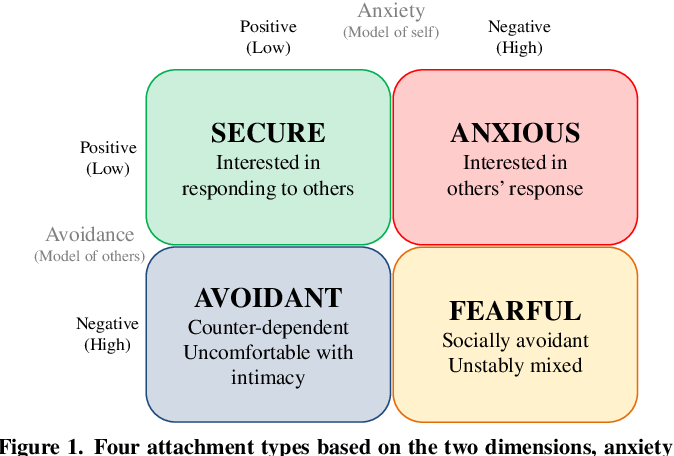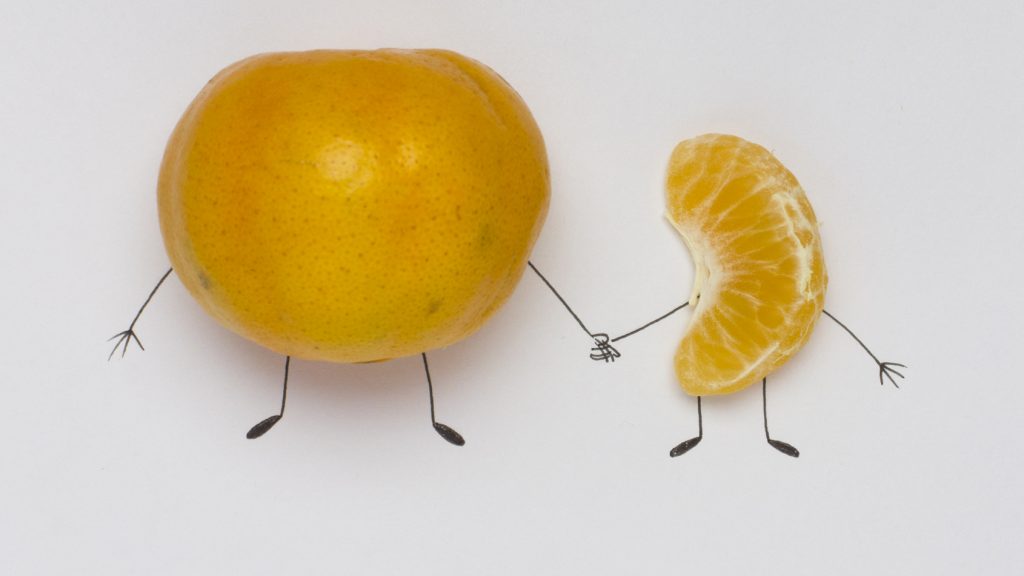Attachment Theory has become a deeply researched area of couple’s therapy. The fundamental premise of Attachment Theory is that we learned how to be a husband, or wife, or parent, for that matter, from our early-life relationships with our parents or other primary caregivers.
The degree to which our parental attachment figures attended to our emotional and physical needs shaped the “attachment style” that we eventually formed. Attachment theory informs many Couples Therapy Models and theories such as Imago, and the science-based couple’s treatments; Emotionally-Focused Couples Therapy, and the Gottman Method.
It is important to make a point of learning not only the dominant attachment styles of couples but also their relative ratings across all four attachment styles. Rarely do you see a client who is purely one style. They are mostly a bit of this, and a lot of that. But there is often a dominant style which overshadows all the rest.
FOUR STYLES OF ATTACHMENT

Secure Attachment
Some people are fortunate. They had parents who made them feel safe and loved. They could go to them and get their needs met. They felt an abiding sense of love, safety, and security. This is called Secure Attachment.
Securely attached children received generous amounts of loving parental attention and playtime. Their parents were reliably responsive and empathetic. This warm environment results in children also becoming measurably more empathetic than other children who were not fortunate enough to be securely attached.
Securely attached children are less aggressive and more responsible than children with more problematic attachment styles. Secure attachment creates a healthy template for future intimate relationships. If your partner is securely attached, you know that you can count on them. They are reliable. They have your back. Fortunately for the human race, it is estimated that Secure Attachment at 50% is the most common of all the attachment styles.
The most noteworthy trait of the securely attached, as opposed to the next style, Anxious Attachment, is their capacity to understand themselves and others as well. They exude a calm self-possession that is attractive to others.
Anxious/ Preoccupied Attachment
If parents were inconsistent with their parental attention, someone will never really know what is going to get. But because they were occasionally reliable, the person will keep pulling on that slot machine lever of love hoping for a big love payday. This is the torment of Anxious Attachment. Adults with anxious attachment sometimes act clingy and can be demanding. They can never manage to calm themselves down, even if their partner is reliable and securely attached.
People of the anxious-preoccupied type, at about 20% of the population, are tied with Avoidant Attachment for the second most common attachment style. Because their early attachment needs were often poorly attended to, they crave intimacy from their partners, but tend, at the same time, to doubt their own value as partners. Their almost perpetual anxiety makes it difficult to accept that they are loved and cherished.
Dismissive/ Fearful Avoidant Attachment
These kids grow up with the reasonable belief that their needs will never be met, so they better get used to taking care of themselves. This is called Avoidant Attachment. To a person with this style people always let them down. It’s just the way it is. Getting close may desirable, but scary at the same time. Or they may decide that being alone is less of a hassle, and prefer to dismiss the importance of intimate bonds altogether. These people can relax when they are alone. They count on themselves. Avoidant and Dismissive Attachment, are characterized by different forms of emotional withdrawal and intimacy avoidance. So as you can see, there are Dismissive Avoidants, and Fearful Avoidants.
Disorganized Attachment
Secure, Anxious, and Avoidant Attachment allegedly comprise about 90% of human attachment styles, leaving about 10% for Disorganized Attachment. Disorganized Attachment is a lot more common than we are comfortable admitting. Some kids get the worst, most horrific parental hand. They suffer abuse, trauma, experience or witness violence. They never develop a sense of safety or security with intimate others. They can sometimes behave like they are anxious, and sometimes like they are avoidant. This is the nightmare of Disorganized Attachment. Disorganized Attachment makes it an overwhelming challenge just to calm down and self- soothe. People with Disorganized Attachment typically have chaos and turmoil in their intimate relationships. They may lean heavily on others to help them to manage their feelings.
They find it difficult to be vulnerable to others or to ask for help. Trust is in very short supply. People are not only unreliable they can be dangerous. They typically have an ongoing struggle in their marriages and can be triggered by traumatic memories even when parenting their own children. Developmental Trauma and Disorganized Attachment are often two sides of the same coin.
However, the task of marriage counseling is to not only counsel clients on helpful ways of communicating but also helping client atone, attune and attach. Couples need to be able to tolerate acknowledging how their actions missed or hurt the other (even when it wasn’t their intention to hurt), then learn how to read their partner (what does sadness, loneliness, shame, joy, hurt, anger, etc. look like in their partner and how can they respond to those feelings so their partner can feel loved). Finally, counselors need to help couples understand the need to learn new ways of attaching (recognize their own style of attaching and its insecurities and learning new strategies of trust with their partner).

